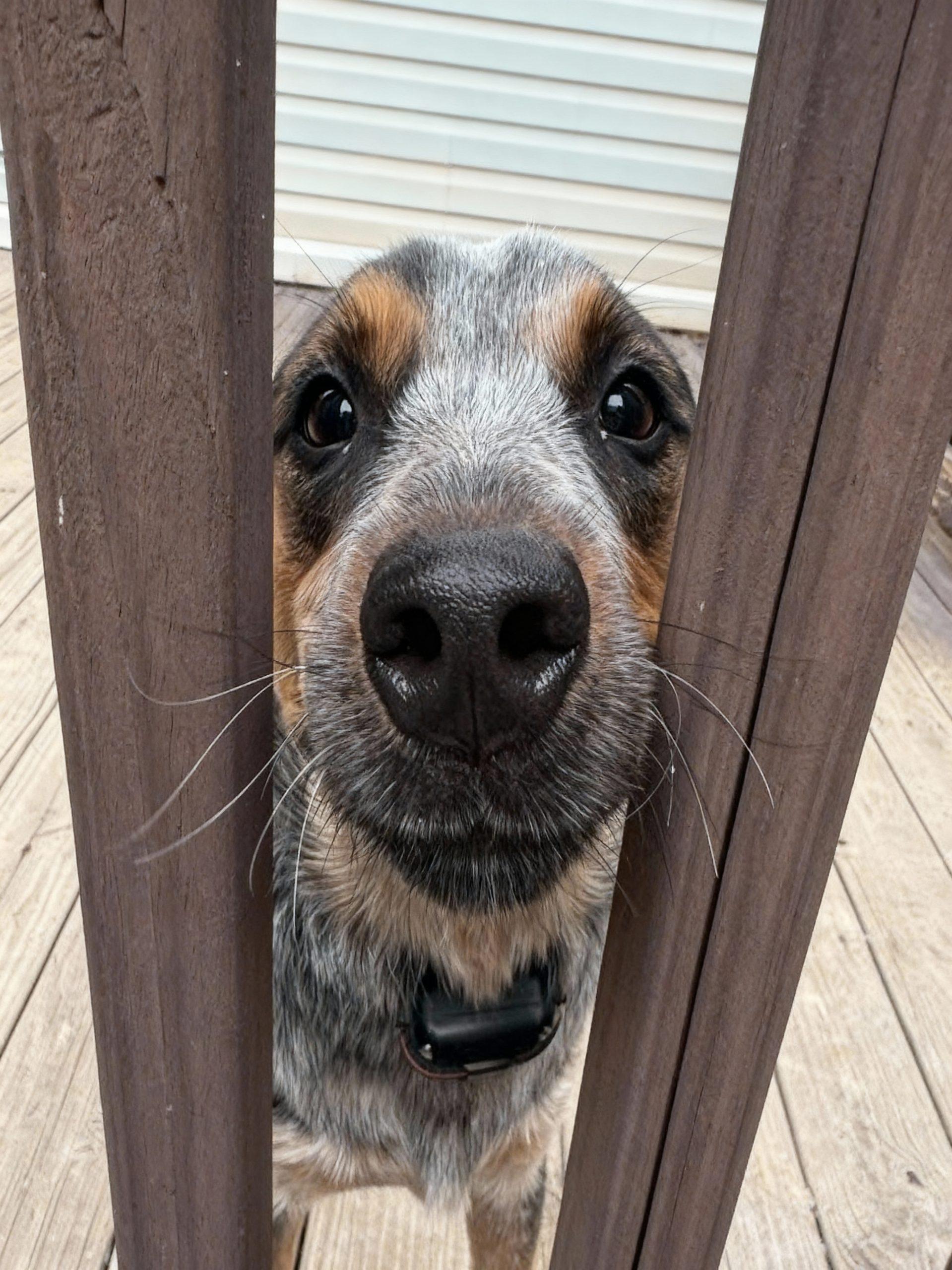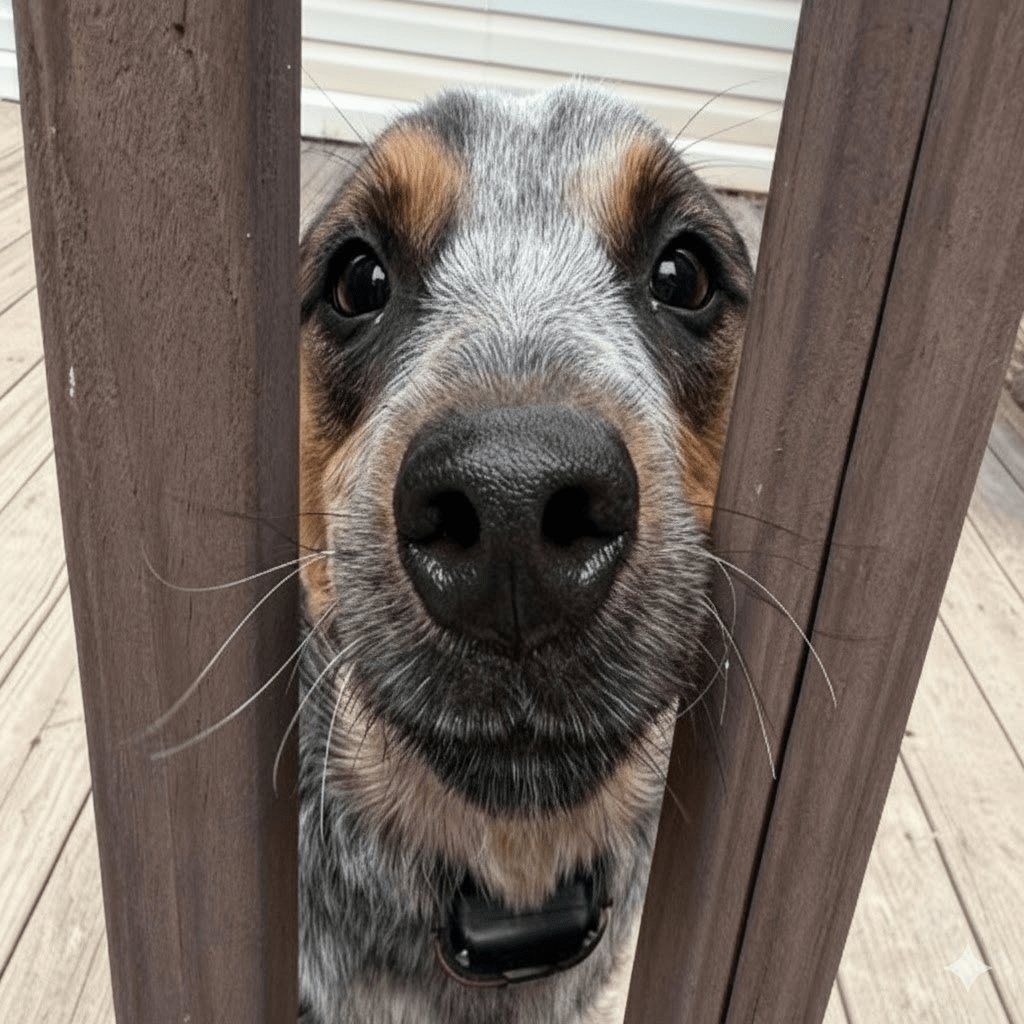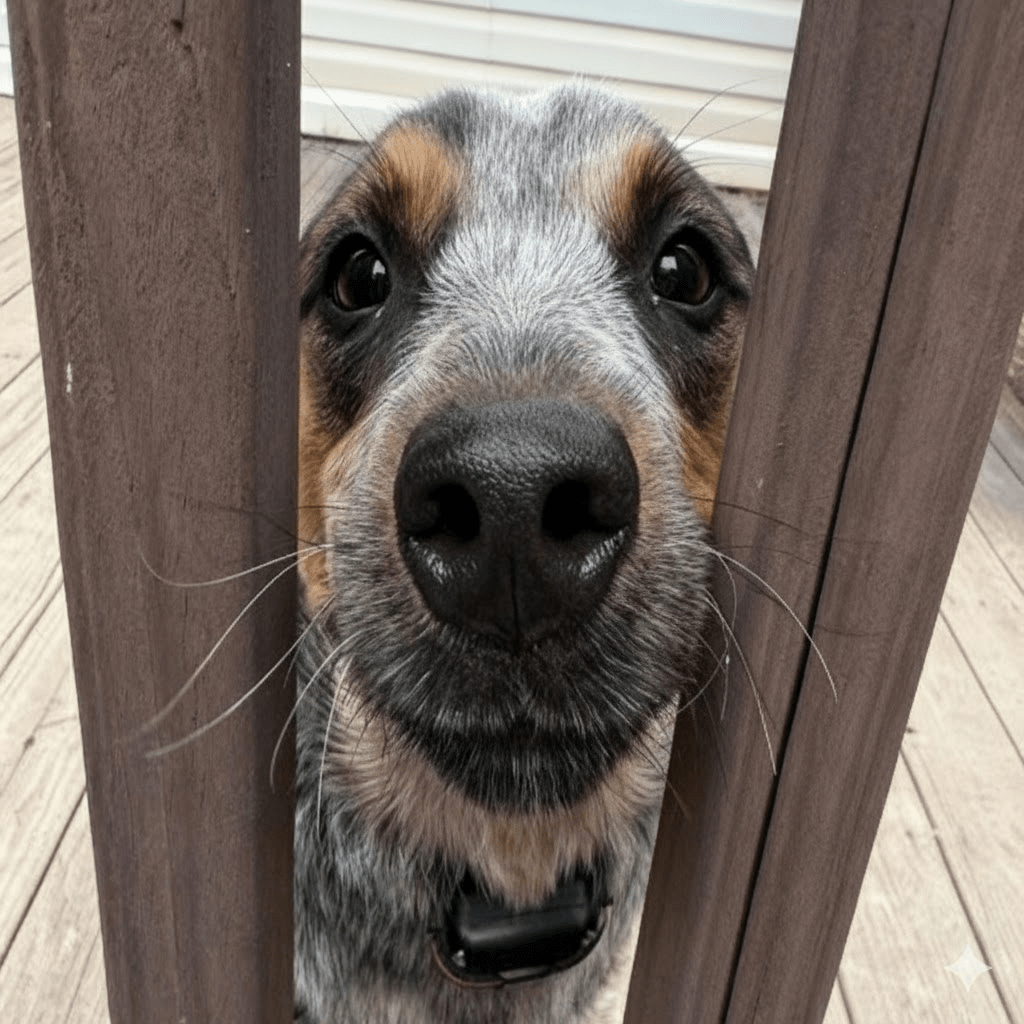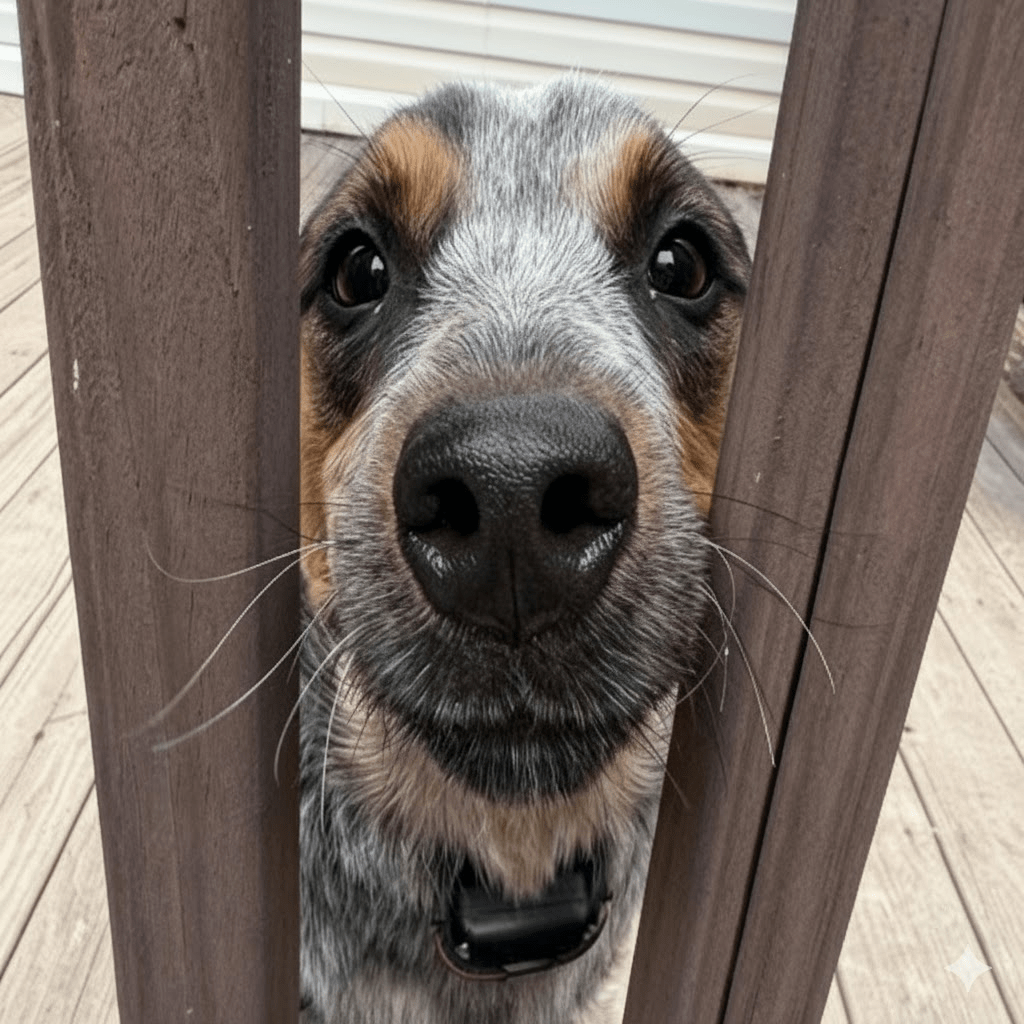The image of a blue heeler puppy, peeking inquisitively through a wooden fence, captures more than just a moment; it encapsulates the very essence of canine curiosity and the profound connection dogs share with their human companions. This compelling visual serves as a window into the rich emotional landscape of our four-legged friends, inviting us to ponder the depths of their perception and the innocent wonder with which they approach the world. The puppy’s wide, dark eyes, framed by the rustic slats, convey a mixture of eagerness and gentle inquiry, a universal expression that transcends species and speaks directly to the heart. It’s a reminder of the immediate, unadulterated joy and engagement that dogs bring into our lives, a relationship built on trust, affection, and an unwavering desire to be part of our experiences. This single frame, therefore, is not merely a picture of a dog; it is an eloquent testament to the unique bond we share, a bond characterized by unspoken understanding and boundless devotion.

Beyond the initial charm, the puppy’s posture and expression offer valuable insights into canine behavior. Dogs, particularly those of working breeds like the blue heeler, are naturally observant creatures. Their keen senses, especially smell and hearing, allow them to process vast amounts of information about their surroundings. The act of peering through an opening, such as this fence, is a classic demonstration of their innate desire to explore and understand. It’s a calculated risk, a gentle probe into the unknown, driven by an insatiable curiosity about what lies beyond their immediate confines. This behavior is not merely playful; it is a fundamental aspect of their cognitive development, helping them map their environment and learn about potential threats and opportunities. This exploratory drive is a cornerstone of their intelligence and adaptability, allowing them to thrive in diverse environments and roles.

The visual connection forged by those eager eyes also speaks volumes about canine communication. Dogs have evolved alongside humans for thousands of years, developing sophisticated ways to interact with us. Their gaze is a powerful tool, often used to solicit attention, express affection, or convey a need. In this instance, the puppy’s direct eye contact, even through the barrier, suggests a desire for engagement. It’s an invitation to interact, to play, or simply to acknowledge its presence. Understanding these subtle cues is crucial for responsible pet ownership, allowing us to build stronger, more empathetic relationships with our canine companions. Recognizing their attempts to communicate fosters a deeper understanding and strengthens the bond between human and dog.

Moreover, the fence itself serves as a symbolic element. While it creates a physical barrier, it doesn’t entirely obstruct the connection. In fact, it might even heighten the sense of anticipation and desire for interaction. This speaks to the resilience and determination of dogs to connect with their preferred individuals. Even when separated, their intent to engage remains strong, often leading to creative ways of overcoming obstacles, much like this puppy’s careful maneuver to peer through the slats. This persistence reflects their social nature and their deep-seated need for companionship and interaction with their human families. The fence, therefore, becomes less of a deterrent and more of a stage for their endearing efforts to bridge the gap.







